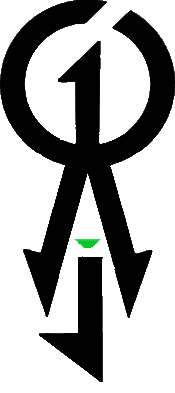Technical Skills
Front-End Developper
The front end of a website is the part that users interact with. Everything that you see when you’re navigating around the Internet, from fonts and colors to dropdown menus and sliders, is a combo of HTML, CSS, and JavaScript being controlled by your computer’s browser.
SKILLS AND TOOLS
Front-end developers are responsible for a website’s user-facing code and the architecture of its immersive user experiences. In order to execute those objectives, front-end devs must be adept at three main languages: HTML, CSS, and Javascript programming. In addition to fluency in these languages, front-end devs need to be familiar with frameworks like Bootstrap, Foundation, Backbone, AngularJS, and EmberJS, which ensure great-looking content no matter the device, and libraries like jQuery and LESS, which package code into a more useful, time-saving form. A lot of front-end developer job listings also call for experience with Ajax, a widely used technique for using Javascript that lets pages dynamically load by downloading server data in the background.
Using these tools, front-end developers work closely with designers or user experience analysts to bring mockups, or wireframes, from development to delivery. Strong front-end developers can also accurately identify specific issues in user experience and provide recommendations and codified solutions to influence the design. It’s also important to be able to fluidly partner with other teams across the business to understand specific goals, needs, and opportunities, and then execute on those directives.
Back-end Developper
So what makes the front end of a website possible? Where is all that data stored? This is where the back end comes in. The back end of a website consists of a server, an application, and a database. A back-end developer builds and maintains the technology that powers those components which, together, enable the user-facing side of the website to even exist in the first place.
SKILLS AND TOOLS
In order to make the server, application, and database communicate with each other, back-end devs use server-side languages like PHP, Ruby, Python, Java, and .Net to build an application, and tools like MySQL, Oracle, and SQL Server to find, save, or change data and serve it back to the user in front-end code. Job openings for back-end developers often also call for experience with PHP frameworks like Zend, Symfony, and CakePHP; experience with version control software like SVN, CVS, or Git; and experience with Linux as a development and deployment system.
Back-end devs use these tools to create or contribute to web applications with clean, portable, well-documented code. But before writing that code, they need to collaborate with business stakeholders to understand their particular needs, then translate those into technical requirements and come up with the most effective and efficient solution for architecting the technology.
Full Stack Developper
There’s often not a black-and-white distinction between front-end and back-end development. “Front-end developers often need to learn those additional back-end skills, and vice versa, especially in the current economy where marketing is thinly resourced,” said Matranga. “Developers need some of that cross-discipline. Oftentimes, you have to be a generalist.”
SKILLS AND TOOLS
Full stack developers work, like back-end devs, on the server side of web programming, but they can also fluently speak the front-end languages that control how content looks on a site’s user-facing side. They’re jacks-of-all-trades.
Regardless of the specific tools, dependent on the project or client at hand, full stack developers should be knowledgeable in every level of how the web works: setting up and configuring Linux servers, writing server-side APIs, diving into the client-side JavaScript powering an application, and turning a “design eye” to the CSS.
Using these tools, full stack developers need to be able to immediately identify the client- and server-side responsibilities of a solution and articulate the pros and cons of various solutions.





















Personal Skills
User Experience
Good user interface design facilitates finishing the task at hand without drawing unnecessary attention to itself. Graphic design may be utilized to support its usability, influencing how the user performs certain interactions and improving the aesthetic appeal of the design; design aesthetics may enhance or detract from the ability of users to use the functions of the interface.
Magazines, Tri-folds & Cards
Common uses of graphic design include identity (logos and branding), publications (magazines, newspapers and books), print advertisements, posters, billboards, website graphics and elements, signs and product packaging.
For example, a product package might include a logo or other artwork, organized text and pure design elements such as images, shapes and color which unify the piece.
Customized graphic elements
Web design encompasses many different skills and disciplines in the production and maintenance of websites.
The different areas of web design include web graphic design; interface design; authoring, including standardised code and proprietary software; user experience design; and search engine optimization.
 eppner
eppner







